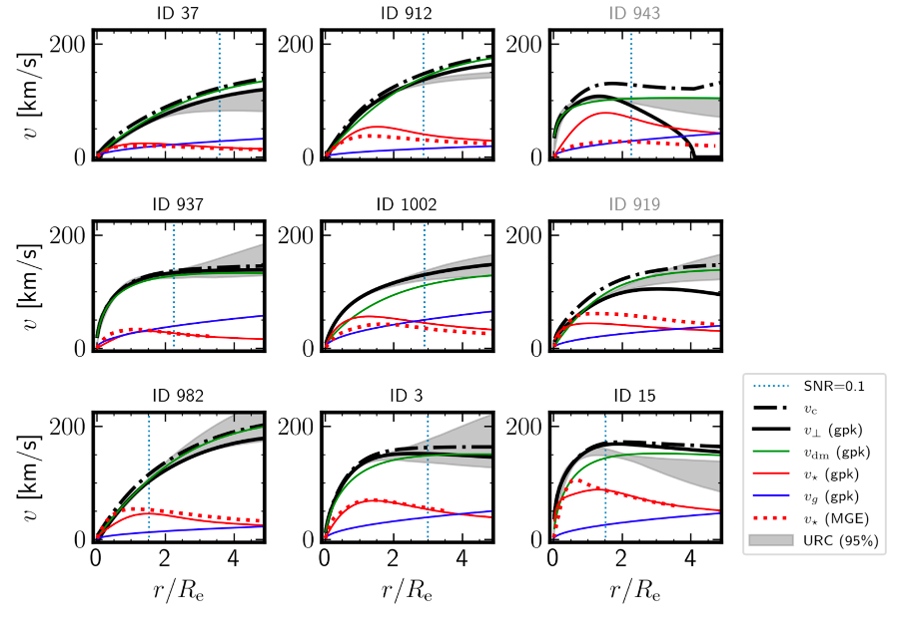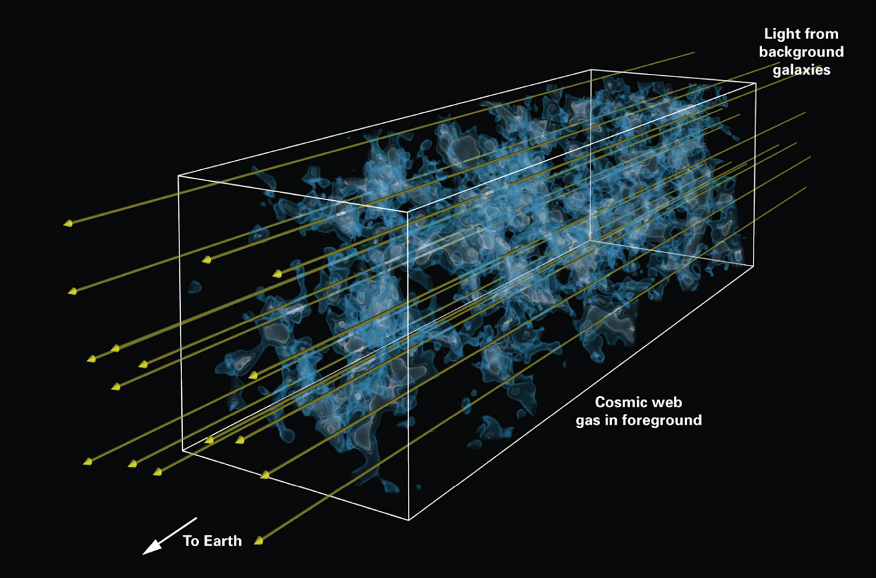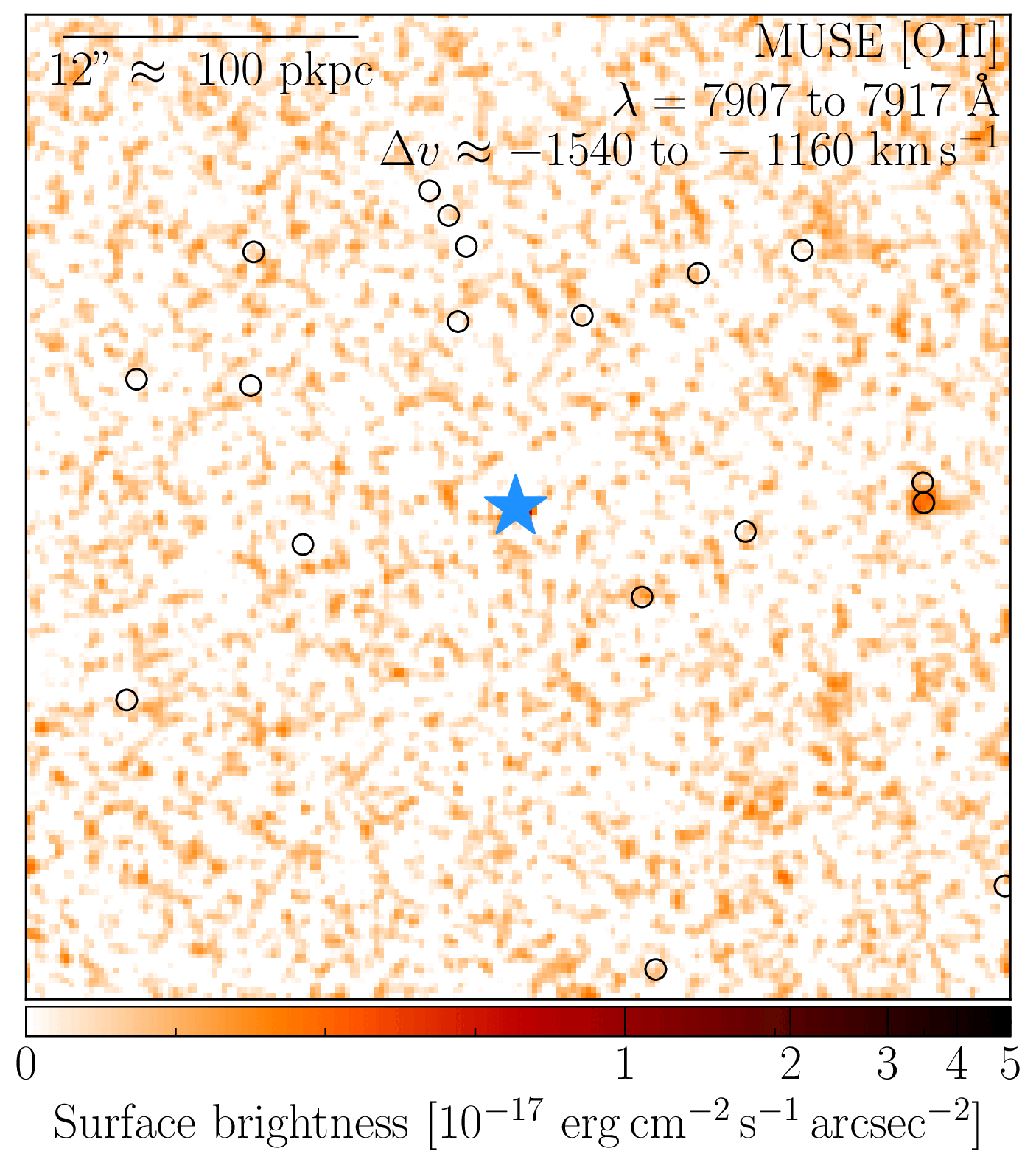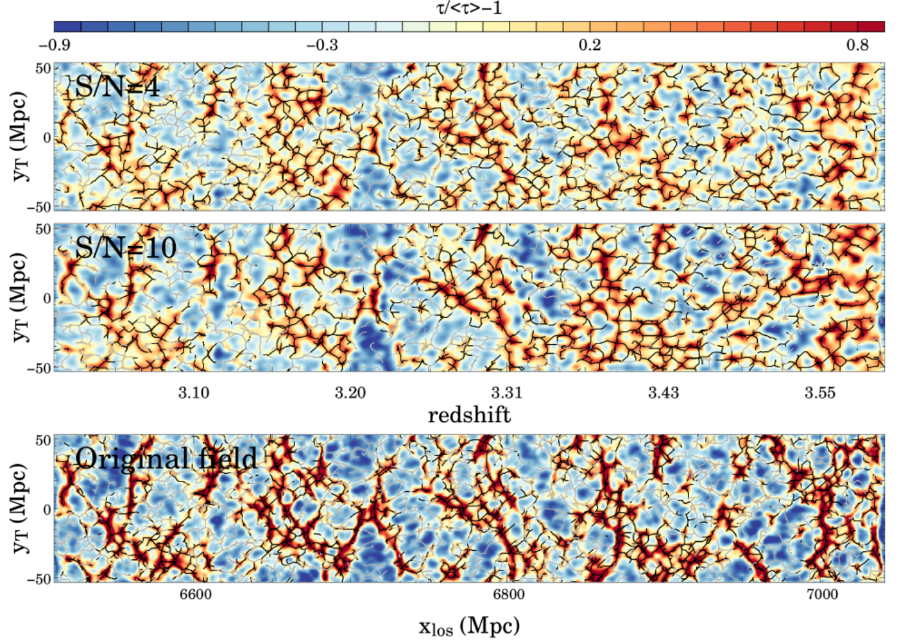Rotation curves of distant galaxies and properties of dark matter density distributions
The seminal works of Vera Rubin and Albert Bosma in late 1970s demonstrated that rotation curves of disk galaxies become approximately flat at large radii. This discovery fundamentally contributed to the introduction of dark matter in the current description of the Universe, and its matter and energy content. The large success of the LCDM model in explaining multiple phenomena in astrophysics is nevertheless challenged by our lack of detection of the dark matter particle, and gaps in our understanding of the properties of dark matter in general.
At high redshifts, where HI observations will not be available until the full SKA is operational, one can use emission-lines of ionised gas to trace the rotation. MOSAIC, with its mIFU mode covering the NIR wavelengths, and behind the largest telescope in the world, will provide an unprecedented sample of rotation curves for galaxies at 2<z<4. The wavelength range of MOSAIC is tuned for observations of bright [OIII] and [OII] emission-lines traceable to several disk radii. The galaxies at the target redshifts are essentially inaccessible for current ground-based instrumentation, but MOSAIC data will provide data for new and important tests of structure formation of the LCDM paradigm, as well as the predictions of numerical simulations. MOSAIC will be an instrument tuned to observe the plateau of the rotation curves measuring it to within a few percent, as well as spatially resolving the shape of the rotation curves in the inner parts to avoid biases due to beam-smearing effects. Targets will be identified and selected among the larger representative sample of galaxies in combination with other science topics.
 Figure 1. Rotation curves and disk – DM halo decompositions for a sample of 9 galaxies observed for 100h with MUSE (Bacon et al. 2021). The dashed-dotted black line represents the total rotation velocity (corrected for asymmetric drift), red curves show the contributions by stars (using two different modelling approaches) and blue lines show the mass contribution of gas. Green lines are resulting DM velocity curves. Figure taken from Bouché et al. 2022)
Figure 1. Rotation curves and disk – DM halo decompositions for a sample of 9 galaxies observed for 100h with MUSE (Bacon et al. 2021). The dashed-dotted black line represents the total rotation velocity (corrected for asymmetric drift), red curves show the contributions by stars (using two different modelling approaches) and blue lines show the mass contribution of gas. Green lines are resulting DM velocity curves. Figure taken from Bouché et al. 2022)
Intergalactic Medium tomography
Matter in the Universe is organised into a cosmic web, an intricate structure that consists of large void regions, sheet-like walls, and connected filaments. The intergalactic medium (IGM) is the gaseous reservoir tracing this cosmic web from which galaxies form.
Galaxies typically form following these structures and grow by merging with one another and accreting intergalactic gas largely along these filaments. The cosmic web has the potential to answer fundamental cosmological questions and have a profound impact on our understanding of galaxy formation. Galaxies form not only in filaments but also denser nodes of intersecting filaments, walls connecting filaments and the voids between these structures. Both the formation and evolution of galaxies are impacted by their position within this diversity of structure. An understanding of the interplay between galaxies and the IGM is necessary to understand how galaxies evolve, particularly at or before cosmic noon as galaxies acquired most of their fuelling gas. The cosmic web at this key epoch has not been mapped for more than a handful of filaments (e.g with MUSE Bacon et al 2022). Thus far the only statistical measurements have come from correlation functions of the IGM tracing Lyman-alpha forest (e.g. Busca et al 2013), while only limited surveys of galaxies at these redshifts have occurred thus far (MUSE and KBSS citations).
Given a sufficiently dense sampling of background sources the cosmic web can be reconstructed in 3D, an approach known as IGM tomography (see Figure 2). MOSAIC will use IGM tomography to provide an unprecedented map of the 3D structures of this gas. Detailed simulations, presented in Japelj et al (2019), show that MOSAIC will break new ground in the drive towards the mapping of the cosmic web in the formative epoch of galaxy formation. MOSAIC will provide a 3D map of the IGM at z > 3, by measuring foreground Lyman-alpha forest absorption in the spectra of bright star-forming galaxies. The use of galaxies as a background source was initially tested by the pilot program CLAMATO, supplementing the traditional approach of using quasars as the background sources). By surveying these galaxies MOSAIC will also provide a large sample of galaxy positions and redshifts within the tomographic volume with which to study the environmental relationship between galaxies and the cosmic web.
Following on from previous surveys (CLAMATO, DESI, WEAVE-QSO and PFS), MOSAIC aims to produce a tomographic field with a novel combination of resolution, area and redshift. In synergy with these larger-scale surveys and the missions like Euclid and JWST, MOSAIC will enable us to probe galaxy environments on all scales and so finally generate a complete picture of the universe as it builds to its star-formation peak.

Figure 2. An illustration of IGM tomography accompanying a demonstration of the approach by the CLAMATO survey Credit : C. Stark & K. G. Lee
{/AF}
|
| ||
The Gaseous Environment of Galaxies at Cosmic Noon
The interaction between galaxies and their gaseous environment (the circum-galactic medium CGM) is critical in galaxy evolution. The cool/warm CGM in the temperature range of ~104-5.5K, which dominate the radiative cooling of the multi-phase gases, is traced by various rest-frame UV/optical lines, either the strong resonance lines in UV (e.g., OVI ƛƛ1032,1035Å, Lyɑ ƛ1216Å, CIV ƛƛ1548,1550Å; Cantalupo et al. 2014), or the forbidden lines often in optical bands (e.g., [OII] ƛ3727Å, [OIII] ƛƛ4959,5007Å; Johnson et al. 2018). A large fraction of these strong emission or absorption lines could be simultaneously covered by ground-based optical/near-IR telescopes at the redshift range of the cosmic noon (z~1-3), when the star formation density peaks. This will allow for a multi-line diagnostic of the gas properties.
The multi-object spectrograph MOSAIC on-board the ELT will enable a hybrid combination of different observation modes, either for multi-object absorption line studies of background objects (quasars or Lyman break galaxies; see the IGM science above), or for IFU mapping of the low surface brightness nebulae (see an example in the figure), or a combination of both. Combined with the ELT’s unprecedented light gathering power, a systematic study with MOSAIC of the CGM around galaxies at the cosmic noon will help us to characterise the cool/warm gas properties from the close vicinity of the galaxies to even beyond their virial radius. This will greatly advance our understanding of some key scientific problems, such as the baryon budget of the galaxies, the dark matter distribution (see the dark matter science above), the ionisation and chemical enrichment of the galaxy environment, the gas recycling following the sequence of accretion, star formation, and follow-up feedback, etc.

Figure 4: An example of a [OII] ƛ3727Å emission line nebula around a bright quasar at z=1.13 (the blue star in the centre). The animation shows the line emission in different velocity channels. Image credit: Sean Johnson (University of Michigan). | ||

